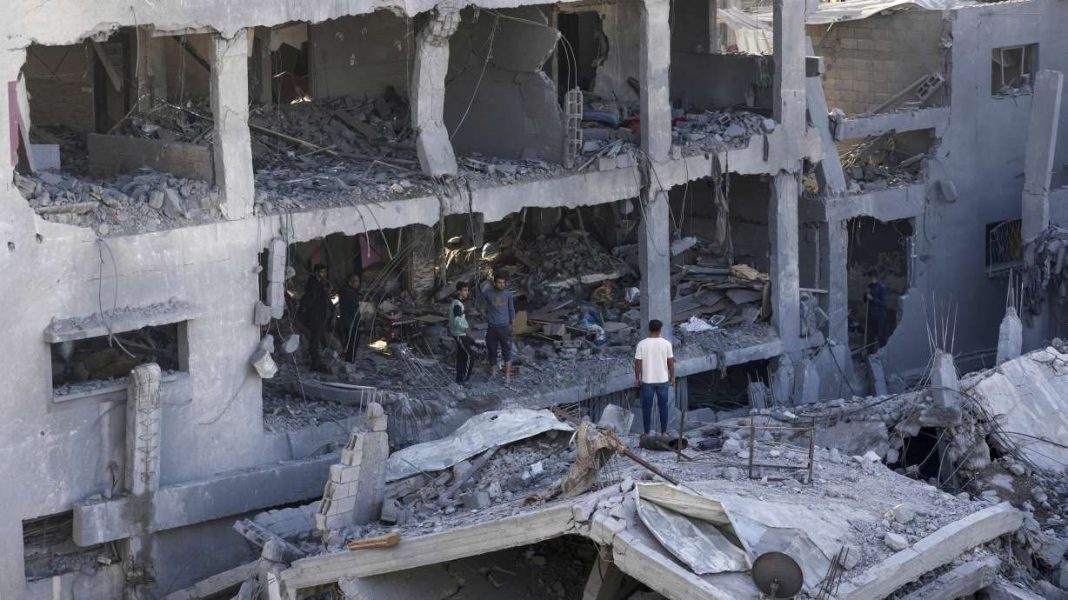Hamas in Gaza strip released 24 hostages on Friday after holding them captive for weeks, cheered by Israel’s initial release of 39 Palestinians from prison. nIsrael was terrorized by the abductions that drove to at least 240 people in Hamas’ Oct. 7 attack, which triggered a war, with hope as 13 Israeli women and children emerged free from Gaza. Among the freed hostages were elderly individuals in their 70s and 80s, and the youngest was a two-year-old. Ten people from Thailand and one from the Philippines were also released.
The truce, which took effect on Friday morning, brought temporary relief to the 2.3 million Palestinians in Gaza, who have been reeling from relentless Israeli bombardment. The truce also brought a halt to the rocket fire from Gaza militants into Israel. The much-needed supplies of food, water, medicine, and fuel promised under the deal have also begun to roll into Gaza, where the UN had warned the Israeli blockade could lead to starvation.
However, the relief is short-lived as it is tempered by the fact that not all hostages will be freed, and the truce only lasts for four days. Hamas has also been criticized by Palestinians for the briefness of the pause, as Gaza remains in a state of humanitarian crisis. The threat of fighting resuming looms over the region.
Israel has stated that the truce could be extended if more hostages are released, but they have also reiterated their vow to continue their offensive once the truce ends. This uncertainty has detracted from the initial hope that the deal could potentially help end the conflict, which has sparked a surge of violence in the occupied West Bank and sparked fears of a larger conflict in the Middle East.
Under the agreement, Hamas is expected to release at least 50 hostages, and Israel is expected to release 150 Palestinian prisoners within four days. The release began with the exchange of women and children. The Israeli government has also stated that for every additional 10 hostages that are freed, the truce can be extended by one extra day.
The hostages were released on Friday night, and the freed Israelis were taken to three Israeli hospitals for observation. The Schneider Children’s Medical Center stated that they are treating eight Israelis, including four children and four women, all of who are in good physical condition but are also receiving psychological treatment. The hospital emphasized that considering the sensitive nature of the situation, they are focusing on giving the families the necessary support.
The news of the release was celebrated in the plaza dubbed “Hostages Square” in Tel Aviv, where a crowd of Israelis gathered.
Yael Adar, whose 85-year-old mother was among the hostages, expressed relief at seeing her mother on TV, free and walking. However, there are still concerns as Adar’s 38-year-old son remains in captivity. Both were kidnapped on Oct. 7 from Kibbutz Nir Oz. Adar stated, “Everyone needs to come back. It’s happiness locked up in grief.”
The hostages include individuals spanning multiple generations. Nine-year-old Ohad Munder-Zichri was released along with his mother and grandmother. The fourth grader was abducted during a holiday visit to his grandparents at Kibbutz Nir Oz, one of the communities that were severely impacted by the abductions.
The plight of the hostages has sparked anger among some families who feel that the Netanyahu government did not do enough to secure their release.
Later in the day, 24 Palestinian women and 15 teenagers being held in Israeli prisons in the occupied West Bank and East Jerusalem were released. In Beituna, a town in the West Bank, hundreds of Palestinians came out onto the streets to celebrate, honking horns and setting off fireworks.
The teenagers were imprisoned for minor offenses, such as throwing stones, while the women included some who had attempted to stab Israeli soldiers and others who were arrested at checkpoints in the West Bank.
Many Palestinians expressed mixed emotions, with their hearts breaking for their brothers in Gaza, but also feeling happiness at seeing their loved ones freed. One father, whose 17-year-old son was freed, stated, “As a Palestinian, my heart is broken for my brothers in Gaza, so I can’t really celebrate. But I am a father, and deep inside, I am very happy.”
The 17-year-old, like many other Palestinians, was held in administrative detention without charges or trial, based on secret evidence. Israel often holds detainees for months without charges, and those who are tried are usually brought before military courts, which frequently do not acquit defendants and don’t follow due process, according to human rights groups.
According to the Palestinian Prisoners’ Club, an advocacy group, there are currently 7,200 Palestinians being held by Israel, including about 2,000 who were arrested since the start of the war.
The temporary end of fighting gave the displaced residents of Gaza a chance to catch their breath after weeks of fleeing, searching for food and shelter, and worrying about their families’ safety. After the truce took effect on Friday morning, four trucks of fuel and four trucks of cooking gas entered through Egypt, along with 200 trucks of relief supplies, according to Israel.
Throughout the duration of the war, Israel has barred all imports into Gaza, except for a small stream of supplies from Egypt. The fuel ban, put in place by Israel because of the fear that it could be used by Hamas, led to a territory-wide blackout, and essential services like hospitals and water systems have struggled to stay operational with generators. Under the truce agreement, Israel will now allow 34,340 gallons of fuel to be delivered daily, which is still only a small fraction of Gaza’s estimated daily needs of more than 1 million liters.
Most of Gaza’s 2.3 million people live in the southern part of the territory, while more than 1 million are currently sheltered in UN schools. The temporary halt in fighting gave those who were forced to evacuate to the south a chance to check on their homes and retrieve some belongings. However, those who fled from the north were warned not to return through leaflets distributed by Israel. Israeli troops currently hold control over much of the north, including Gaza City.
Despite the warnings, hundreds of Palestinians attempted to walk back to their homes in northern Gaza on Friday. As they attempted to cross the border, two were shot and killed by Israeli troops, and 11 others were injured.
Sofian Abu Amer, a resident of Gaza City, took the risk of checking on his home during the truce, stating, “We don’t have enough clothes, food, and drinks. The situation is disastrous. It’s better for a person to die.”
The ceasefire also brought a temporary calm to Israel’s northern border with Lebanon, which saw a high number of attacks from Hezbollah the day before. Although Hezbollah is not part of the agreement, their attacks are expected to cease as well.
The war erupted after thousands of Hamas militants crossed into southern Israel from Gaza, resulting in the death of at least 1,200 people, mostly civilians, and the abduction of dozens of hostages, including children, women, and elderly individuals, in addition to soldiers.
The Foreign Ministry of Qatar, alongside the United States and Egypt, served as a mediator in the negotiations, with Majed al-Ansari, a spokesperson for the Qatari Foreign Ministry, expressing hope that the momentum from the deal could eventually lead to an end to the violence.
However, just hours before the truce commenced, Israeli Defense Minister Yoav Gallant informed troops that the respite would be brief, and the war would resume with greater intensity for at least two more months. Furthermore, Netanyahu reiterated his promise to continue the war until Hamas’ military capabilities are destroyed, their 16-year rule in Gaza is ended, and all hostages are returned.
The Israeli offensive has resulted in the death of over 13,300 Palestinians, according to the Health Ministry in the Hamas-run Gaza government. While around two-thirds of the dead are women and minors, the updated number of civilian casualties was not available at the time of this writing. The Health Ministry does not differentiate between civilians and militants in their death toll, and the figures do not include updates from hospitals in the north, where communication has been disrupted.
Israel claims to have killed several thousand Hamas fighters, although they have not provided evidence to substantiate the numbers.



